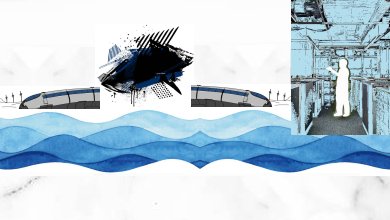
Europe has various cultures, several awe-inspiring global locations, a wide scope of explorations, and is the nation of skiing and snowboarding. The Caucasia is a region extending from Europe to Asia. It is positioned between the Black Sea and the Caspian Sea and mainly occupied by Armenia, Azerbaijan, Georgia, and portions of Southern Russia. It is the habitat of the Caucasus Mountains, as well as the Greater Caucasus mountain range, which has traditionally been regarded as a divide between Eastern Europe and Western Asia. In France and Switzerland (one of the highest countries in the world), mountains such as the Matterhorn, Mont Blanc, and Monte Rosa are admirable viewpoints that rise above the villages beneath them. The Alps (along Italy’s Northwestern border) are by far the most remarkable mountains in Western Europe. Much of Mont Blanc lies within the Italian border. The Dom (in the region of Valais in Switzerland) is a mountain of the Pennine Alps as well as the seventh highest peak in the Alps. Based on reputation, it qualifies as the third tallest mountain in the Alps; after Monte Rosa, it is the second highest in Switzerland. The majestic Matterhorn Glacier in the Monte Rosa area of the Pennine Alps in southern Switzerland is the second longest glacier in the Alps; the Gorner Glacier being the third longest in the Western Alps. The Dufourspitze, positioned between Italy (Piedmont and Aosta Valley) and Switzerland (Canton of Valais), is a gigantic ice-covered mountain massif in the Alps. It is the highest pinnacle in Switzerland, the highest peak of the enormous Monte Rosa, and the second tallest of the entire Alpine summits (and of Europe outside the Caucasus). The name ‘Dufourspitze’ is in honour of the Swiss general Guillame-Henri Dufour. The Monte Rosa mountain massif is not as famous as the Matterhorn Glacier and much of Monte Rosa is situated within the Italian border, but it has in its favour that the pinnacle is in Switzerland and that it is the tallest summit in Switzerland. After Mont Blanc, Monte Rosa is the second highest mountain in the Alps and Western Europe. Monte Rosa is also the only mountain in the Alps that has a staffed hut on its peak. On 9th August 1842, the Italian parish priest of Alagna, Don Giovanni Gnifetti, became the first recognised person to reach the summit on the Monte Rosa massif near the Italian border. After a number of failed endeavours during 1834, 1836, and 1839, he climbed Signalkuppe with a team of eight people. After his death in 1867 his remains were buried on the Monte Rosa summit.
More than one-hundred-and-fifty exclusive mountain huts offer accommodation and shelter to approximately 9,000 people in harsh mountain areas of the Swiss Alps. The huts are managed by the Swiss Alpine Club’s hut system. The very first hut, known as Betemps hut, was built during 1894 at Switzerland’s highest peak of Monte Rosa to accommodate twenty five beds; it was expanded during 1918 to accommodate twenty more beds. Betemps hut was renamed Monte Rosa Hut during 1940. A rule applied to this vulnerable area in the region of the highest summits in the Alps; no unused buildings were allowed! Due to this verdict, the Swiss Federal Institute of Technology (ETH) in Zurich planned and developed a “mountain hut of the future” (an impressive crystal shaped marvel of Swiss architecture and engineering). Permission for construction of a new hut was permitted on condition that the old hut must be demolished. The ETH built the new hut eighty-eight meters above Betemps hut, and opened the new refuge in July 2010. Betemps hut was demolished by the Swiss army during July 2011. The new hut had a capacity for 120 beds, roughly 8,000 overnight lodgers per year. Ever since the opening, the new Monte Rosa hut has warranted a ninety percent self-sufficient energy supply by using the abundant solar energy of the Monte Rosa Mountain. In conjunction with thermal solar accumulators, a photo-voltage structure was incorporated into the hut’s southern frame to supply a reliable and sustainable source of energy self-sufficiency. First of all, the lodge and restaurant for Swiss hikers on the icy slopes of the Monte Rosa Mountain in the Valais Alps was a combined and advanced research and development project of the ETH in cooperation with the Swiss Alpine Club and several other partners to commemorate the hundred-and-fiftieth anniversary of the ETH University in Zurich. Secondly, the Swiss Alpine Authority’s Swiss Alpine Club owns and manages the modern Monte Rosa mountaineer’s eco-building of aluminium and glass, designed by professors and students of architecture and eco-design from Lucerne University and the Swiss Federal Institute of Technology (ETH Zurich). Thirdly, the angular Monte Rosa Hut was designed as a self-sustaining base by architect Andrea Deplazes of the Swiss Federal Institute of Technology (ETH Zurich).
The modern Hut lies high in the Swiss Alpine sky between the Gorner, Monte Rosa, and Grenz glaciers close to the Swiss town of Zermatt – an area located beneath the iconic Matterhorn summit with clear views of the Matterhorn. It is snugly situated between the glaciers of the Pennine Alps in Switzerland at an altitude of nearly three thousand meters above sea level, is surrounded by the tallest summits of the Swiss Alps, and is a prominent display of state of the art technology. Being an architectural gem in the heart of the Swiss Alps it mainly serves as a destination for devoted architectural fans. At a cost of six-and-a-half million Swiss francs (mostly granted by sponsors) and looking like a stranded unknown foreign object on a rock at the centre of a giant glacier, it is barely a perfect model for future huts high in the Alps. It was named ‘Rock Crystal’ due to its reflective aluminium exterior walls and prominent, ultra-modern sustainable design. An octagonal supported concrete base (sixteen meters in diameter) was built on an ice-free rough part of the glacier and completed as a five-storey wooden cabin to provide lodging for one-hundred-and-twenty overnight visitors. The bedrooms are situated on the upper levels. It is one of the most compound wooden structures in Switzerland, the most contemporary hut in the Alps, and represents technology fused into nature. Located on the border between Switzerland and Italy, it is the best reserved secret in the Swiss Alps; furthermore, it is a three-hour hike from the bottom of the mountain and not within reach by car or ski-lift. The Hut’s design and construction involved innovative thinking, imaginative design, and the most recent in technology. The innovative structure is almost self-sufficient; for additional comfort it has a spacious and stylish interior. From March to September it is staffed; afterwards, only a winter room offers shelter to twelve overnight self-catering guests. The fact that the exterior resembles an alien spaceship, does not subtract from the spectacular views of the Matterhorn and its splendour of being a comfortable winter lodge inside. Of all the mountain huts in Valais, the aluminium-clad Hut’s added attributes create the ideal formula for it to be known as the busiest hut of Switzerland.
The development and construction of the Hut was specifically organised in such a way that it could serve as an example of sustainable energy and resource of self-efficiency. With ninety percent self-sufficient energy and systems put in place to be completely self-sufficient, it nevertheless functioned under excessive climatic conditions. Sadly, it came to a point where it was unsuccessful to meet up to the energy targets embarked upon during the construction phase. Siemens AG technical company was granted a contract to design a complete solution to the problem. They modernised the energy efficiency of the Alpine Hut with an advanced battery storage solution by replacing more than eight tons of lead batteries with less than three tons of lithium batteries. The innovative battery solution increased the hut’s energy self-sufficiency to superior heights by reducing the burden on the generator in dreadful weather conditions. In addition, the new batteries offered additional practicality and significantly boosted the Monte Rosa Hut’s sustainable energy supply at whichever time of day and whatever weather conditions.











